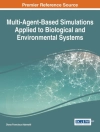The papers in this volume provide an introduction to well known and established system identification methods for structural health monitoring and to more advanced, state-of-the-art tools, able to tackle the challenges associated with actual implementation. Starting with an overview on fundamental methods, introductory concepts are provided on the general framework of time and frequency domain, parametric and non-parametric methods, input-output or output only techniques. Cutting edge tools are introduced including, nonlinear system identification methods; Bayesian tools; and advanced modal identification techniques (such as the Kalman and particle filters, the fast Bayesian FFT method). Advanced computational tools for uncertainty quantification are discussed to provide a link between monitoring and structural integrity assessment. In addition, full scale applications and field deployments that illustrate the workings and effectiveness of the introduced monitoring schemes are demonstrated.
Table of Content
Introduction.- Parametric and non parametric identification methods: an overview.- Parametric methods for the treatment of nonlinear dynamics.- Bayesian parameter estimation.- Bayesian operational modal analysis.- Bayesian uncertainty quantification and propagation (UQ+P): state-of-the-art tools for linear and nonlinear structural dynamics models.- Efficient data fusion and practical considerations for structural identification.- Implementation of identification methodologies on large scale structures.












